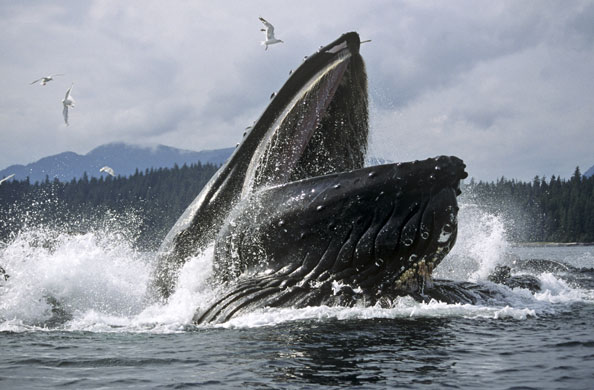 |
| A great blue whale opens its vast mouth |
Baleen whales - cetaceans that possess filter feeding bristles - have highly elastic lower jaws that allow them to open their mouths in a cavernous gape that is large enough to swallow a kombi van. Elastic jaws are thought to be a feature of all baleen whales both fossil and modern. Fitzgerald's theory states that instead of going from large stiff jawed cetaceans to baleen whales, there was an intermediate step that mixed the two characteristics of the groups. The final step was to find this missing link.
 |
| The fossilised skull of Janjucetus hunderi |
However a second feature is needed for successful filter feeding: a wide upper jaw which creates a large cavity inside the mouth. Janjucetus had the wide upper jaw possessed by cetaceans. Fitzgerald states that, in the time that modern baleen whales evolved, it would have been easier to go to whales that had a wide jaw, but used their teeth to catch prey and then onto a creature with an elastic jaw that could open wide enough to create suction. Such a creature would have been very similar to dolphins with their stiff lower jaw and teeth.